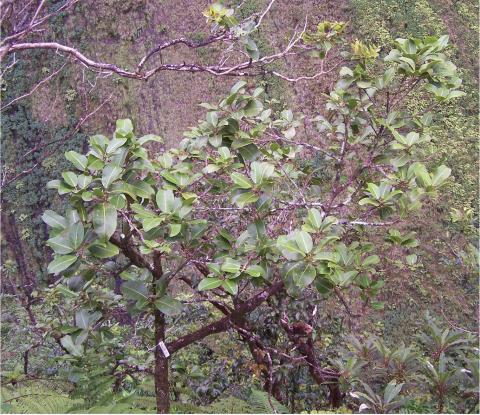
A newly discovered Hawaiian tree recently had the distinction of being added to the International Union for the Conservation of Nature’s Red List of Critically Endangered Species in the same scientific article in which it was named.
Melicope oppenheimeri, named last year in the journal PhytoKeys by botanists Marc Appelhans and Warren Wagner of the Smithsonian’s National Museum of Natural History and Kenneth Wood of the National Tropical Botanical Garden in Hawaii, is known today from only 3 wild specimens on an isolated cliff-base plateau in West Maui’s upper Waihe‘e Valley. Seven wild specimens first drew the attention of botanists in 1998. Four have since died.
“It ranks among the rarest species on this planet,” Appelhans and Wagner write in the Natural History Museum’s Botany Department Newsletter.
Feral pigs introduced by humans and the forest degradation they have caused on West Maui are largely responsible for altering the lowland wet forest community on this plateau and allowing invasive weeds to dominate, threatening M. oppenheimeri and other indigenous plant species, the scientists write in their journal article.
Measures have begun to prevent the extinction of M. oppenheimeri with the establishment of two new individuals. Botanists used air layering, a replicating method that allows rooting of the branches of woody plants while they are still attached to the parent, to start the new trees that now grow at the Olinda Rare Plant Facility on Maui.

